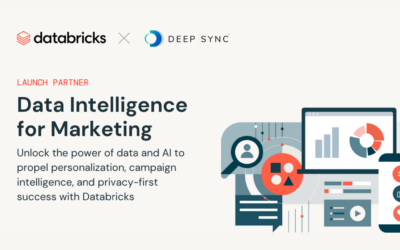Data is a powerful tool with near-limitless potential. But, to make your data work for you, you must refine your collection and analysis processes so that they generate valuable insights.
Data practitioners spend around 60% of their time on data preprocessing alone, and for good reason. Improper data preparation (particularly, failing to aggregate data) can limit the value you can glean from it and, ultimately, lead to data silos.
These data silos, or isolated divisions of data, can delay decision-making, hinder team collaboration, and result in redundant and inconsistent data that stalls progress.
If this describes your organization’s current state, don’t stress! In this guide, we’ll review four steps you can take to break down costly data silos and get your performance back on track.
1. Identify your pain points.
Unfortunately, data silos are easier to spot after the fact, so the first step in developing a data silo prevention plan is to identify the breaking points.
Identify the systems or teams experiencing slowed progress and trace the issue back to its source. For example, a medical practice may observe that patients are experiencing avoidable health events, but lack the data to provide a holistic view of their care needs. Alternatively, a company experiencing stalled hiring efforts may discover that its team lacks access to employee recruiting tools that provide actionable metrics.
Whatever the cause, list the “symptoms” and follow them back to your data. Common data issues that organizations run into include:
- Data security or compliance concerns
- Limited data storage capacity
- Disparate datasets needing aggregation
- Inaccurate or incomplete reports
- Redundant datasets
- Uninformed decision-making
- Customer experience issues
Gather feedback from your stakeholders to finalize your list and the associated technology or software systems. With their opinions in mind, you can move toward a more connected and complete data solution. This may include updating software, enhancing cross-functional team collaboration, and ensuring smooth data exchange.
2. Review your current processes.
With your current pain points in mind, conduct a deep dive to understand how data flows through your internal teams and software systems. Look for ways your data can easily become trapped, inconsistent, or redundant, noting both existing and potential bottlenecks.
Get started by answering these questions:
- What are your primary data sources? Your full data pool most likely includes a collection of client-provided, third-party, and company-collected data. Look for data from specific digital marketing channels, such as website analytics, social media interactions, and email marketing campaigns.
- What is the intended end use of your data? Clarify your end goal. For instance, you may use customer insights, trends, and behaviors to enhance customer service, or utilize dashboards to forecast future trends based on historical data. Ensuring that your collected data aligns with your business goals will help you use all data strategically, rather than wasting unnecessary resources.
- How is your data collected? You may have structured data files within your CRM systems in addition to third-party data obtained from external partnerships. What application programming interfaces (APIs) do you use across these systems? Are they standardized and scalable as your data load expands?
- Where is your data stored? Do you have a cloud-based data warehouse? Can it accommodate diverse data types and increasing volumes? Can you easily cleanse your data, or do you find it challenging to maintain data quality? Keep in mind that your storage solution must be scalable, so if you’re starting to see silos appear, it’s best to take action before they stall your future progress.
In addition to these questions, consider how your team interacts with your technology—are there skills or knowledge gaps within your organization? You can remedy gaps by updating your onboarding and training processes. Or, maybe your team believes investing in upgraded software could resolve your current issues. Either way, take their perspective into account when auditing your systems.
3. Establish clear data governance policies.
Data governance refers to a set of standardized roles, policies, and metrics that your organization follows to manage its data ethically and effectively. A well-planned data governance framework covers strategic, tactical, and operational best practices that will ensure compliance and privacy.
Although specific individuals or teams may carry the most weight when it comes to data management, clear data governance is a responsibility shared by everyone. And, when upheld, it can help you avoid or overcome data silos. Create your policy by clearly defining the following data standards:
- Ownership. Define who owns what data based on each dataset and source, specifying which team or individual is responsible for management, accuracy, and compliance. For instance, your content marketing team may be responsible for all data related to content performance.
- Access and permissions. Maintain a list of individuals who have access to view, modify, or share specific data, along with the corresponding circumstances. Limit data access to authorized users and ensure both internal and external parties document and approve data access requests.
- Quality standards. Specify the level of accuracy, consistency, and timeliness expected from each dataset. Include considerations for generative technology, such as AI-powered tools, that use your data to deliver valuable insights. Note when you’ll perform data quality checks and how you’ll address data discrepancies.
Data governance policies promote responsible data management and resolve bottlenecks by encouraging transparency, consistency, and collaboration across the organization. Following these established protocols will keep your data clean and empower your team to steward its data effectively.
4. Invest in relevant solutions.
Once you’ve identified your pain points, mapped your data’s journey, and established clear governance expectations, it’s time to consider which data solution works best for your organization. Depending on your organization’s goals and needs, this process may require a minor internal adjustment or a comprehensive overhaul of your entire tech stack.
To determine which option makes more sense, consider whether an in-house system or an external solution will yield a higher return on investment (ROI). Arcadia’s data platform guide states that this pivotal decision requires organizations to consider whether they should take a “build-your-own (BYO) approach” or purchase a platform from a vendor.
Here’s how these approaches differ:
- BYO platform: Building your own in-house solution involves using an open database management system to house your data infrastructure, then integrating third-party tools (such as analytics tools) as needed for other capabilities.
- Commercial platform: Purchasing a platform from a vendor means implementing already-established software with pre-built integrations.
When making this choice, consider your team’s needs and budget. Do the work ahead of time to ensure the solution you choose is best for your organization, both now and in the future.
Whether you’re applying data to your marketing strategy or using it to inform operational performance, don’t let silos threaten your progress. Take control of your data by assessing and proactively resolving your pain points. Collaborate with your team to identify solutions that work for your organization and will improve performance.












0 Comments